Think Airplane Safety and Security.
Not Just Blue Skies And Movies On Demand.
Airplane Safety... Just How Safe Is Flying?
Airplane safety is calculated by the air industry by "deaths per billion kilometres". This method shows flying is the safest form of transport available...60 times safer than car and 12 times safer than train.
However, based on the "deaths per billion people transported" calculation favoured by the insurance industry flying rates as 30 times more dangerous than bus and 3 times more dangerous than car transportation".
Confused?
Don't be. Flying is in most cases very safe with mostly excellent airplane safety standards. All travel entails some degree of risk; even walking down to your corner store can sometimes pose a safety and security concern.
Today's modern aircraft are so well designed and engineered that they can even withstand lightning strikes... (studies by Boeing reveal that jet airliners suffer lightning strikes on average twice per year).
Airplane Safety...See for yourself... Boeing 747 struck by lightning.So the message is...as long as you're not flying with "Shonky Airways" (with old, badly maintained aircraft, a poor airplane safety record and inadequately trained air crew)... enjoy the ride.
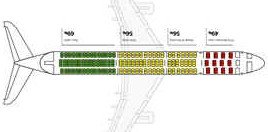
Airplane Safety...Which Are The Safest Seats In A Plane"?
Airplane safety experts The Federal Aviation Administration and Boeing both maintain that "One seat is as safe as the other" when it comes to flying.
Yet in 2007 "Popular Mechanics Magazine" 2007 analyzed all commercial jet crashes in the U.S. going back to 1971 and concluded:
"Passengers near the tail of a plane are about 40 per cent more likely to survive a crash than those in the first few rows up front".
Another airplane safety experiment in September 2012 carried out by Massachusetts Institute of Technology and Wayne State University in Detroit came up with a similar conclusion. A Boeing 727 was fitted out with cameras and data collecting sensors before being crashed into Mexico's Sonoran Desert under remote control at 225 km/h (the crew parachuted from the plane just before impact).
The crash was a "high vertical load impact" ( 80% of commercial airliner crashes are) and revealed that the cabin and front 11 rows experienced a shock-wave of 12G, the middle rows 9G, and the back section 6G. However, it also showed that many of the survivors in the tail section crouched in "the brace position" would have most likely suffered broken ankles from their body weight bearing down on their legs and would have had difficulty exiting the wreckage.
And guess where most "black box flight data recorders" are found?
You guessed it... in the tail section of aircraft.
And one more thing... most flight data recorders are not black at all but bright orange so as to be more easily found.
Airplane Safety...Are you healthy enough to travel?
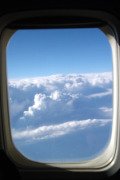
Flying High.
Travelling on long flights can be stressful.
It's often stressful enough rushing to get to the airport on time, dragging heavy baggage around, then working your way through check-in queues and security checks. Then you're faced with:
- Cramped Seating...especially in Economy Class.
- Sharing a confined space and 50% recirculated air with many others.
- A cabin pressure equal to 5,000 to 8,000 feet above sea level, which means less oxygen circulating in the blood.
- A very dry atmosphere of less than 10% to 20% humidity.
- Gas expansion (in sinus, middle ear, up to 25% in the gut) at the high altitude.
- Limited medical assistance should some health problem arise.
By all means look forward to an enjoyable flight being pampered with fine meals and the latest in-flight movies.
But also spend a minute or two deciding whether you need to consider taking any of the following precautions related to airplane safety:
| What Can Go Wrong | What You Can Do |
|---|---|
Deep Vein Thrombosis...also known as "economy class syndrome" but is better called "traveller's thrombosis" as it can also occur on long bus or car trips.Blood clots can form in the legs. This can produce a life threatening situation if a clot breaks off and travels to the lungs, heart or brain. It is thought up to 20 per cent of travellers may have an increased clotting tendency. If you're over 40, have had recent surgery, are taking medication or have an unstable medical condition, you need to be especially careful. Check with your doctor before flying. Taller people, pregnant women and travellers suffering from obesity are all likely to encounter greater difficulty staying comfortable over long distances. |
...some airlines allow early on-line check-in so you get the best seat allocation. ...aisle seats are preferable so you can get up more easily (but not too close to a rest-room), or near an emergency exit with more leg room). ...wear loose clothing that breathes. ...avoid tight synthetics (they easily burn/melt in a fire). ...keep the leg space under the seat in front free so you can better stretch and exercise feet and ankles. ...avoid alcohol and coffee, they are diuretics and cause fluid loss and dehydration. ...drink plenty of water or juice to avoid dehydration. ...walk around the cabin at least once an hour. ...consult your doctor if you have any underlying illness like coronary artery disease, blood clotting disorder, varicose veins, etc. ...don't take sleeping pills to "knock yourself out" during the flight. ...some doctors and pharmacists recommend taking low-dose aspirin before flying. ...wear below knee compression stockings. ...avoid tight fitting shoes as feet often swell during a long flight. ...pregnancy significantly increases the risk of DVT. ...passengers with heart, lung or blood conditions may suffer from the lower cabin oxygen levels. |
Travelling With Sick Passengers.Sick people are not supposed to be allowed aboard aircraft. Your worst nightmare is to find yourself and your family sitting near someone who's sniffling and coughing their heart out. Every sneeze sends viruses and bacteria spraying metres in all directions, showering everyone nearby. You just know that you can't help but catch it (unless your lucky enough to have immunity... Good Luck!). Even worse... they might not yet be showing symptoms but may still be contagious with some horrible disease. Like the American flight that departed Boston in 2008 heading for Los Angeles. 35 passengers were from a tour group that had recently seen 2 members hospitalized with acute vomiting and diarrhea. Within a few hours six of these were vomiting into air-sick bags while one had multiple bouts of diarrhea, one of which deposited faeces in the aisle way. Sick passengers soon fouled the rest-rooms so much they had to be closed off. The situation became so dire the plane was diverted to Chicago and the flight cancelled. Tests later revealed 15 of the group had been infected with the illness which peaked that day on the plane. In 2003, during the SARS (Severe Acute Respiratory Syndrome) epidemic, 16 out of 120 passengers on a flight from Hong Kong to Beijing developed proven SARS from an infected passenger. |
...if you find yourself sitting near someone who appears ill, ask to be moved to seats well away. ...what if the flight is full? Make it clear to airline staff you shouldn't be placed at risk of contracting someone else's illness. ...exercise thorough personal hygiene when using the rest-room (use tissue paper when touching door handles, etc). ...avoid touching surfaces as much as possible when moving around the cabin.Organisms can survive for long periods and aircraft are hard to deep-clean. ...use hygienic wipes frequently. ...consider carrying face masks for you and your family. They may help a little. ...in the Boston flight mentioned it was determined that passengers in aisle seats were more at risk of viral shedding as sick passengers dashed past them to the rest-room. ...it may be wise to get your family doctor and pharmacist to help you put together some kind of "medical travellers kit" before you take off. If you're in dire straights while overseas you'll probably need to seek treatment from foreign medical staff. However, sometimes you can scrape by if you've been prescribed an antibiotic or two (for generilized infections); some analgesics/antipyretics (for fever); medication for traveller's diarrhoea, and perhaps motion sickness. |
Gas Expansion At High Altitude."What's the big deal about a bit of expanding gas?" Ear problems are the most common medical complication of plane travellers. The trouble occurs with a rapid change in altitude. If air is trapped in one of your sinuses or middle ear it can lead to excruciating pain, dizziness, loss of hearing, bleeding, or a ruptured ear drum. It happens if the Eustachian tube (which is no bigger than a pencil lead, and connects the back of the nose to the middle ear) is blocked. Intestinal gas expansion can also be very uncomfortable, especially in pregnant women. |
...avoid flying with a head cold. ...ditto for nasal congestion, infected ears or sinuses. ...decongestant sprays and tablets may help but shouldn't be used excessively. ...try yawning or swallowing, or chewing gum. ...try the "Valsalva manoeuvre"; pinch your nose and blow. ...babies can suck on a pacifier or bottle. ...avoid sleeping during ascent and descent. ...avoid gas producing foods a day or two before flying. |
Airline Safety...Other Problems You Might Encounter.
Low Cabin Humidity.
Aircraft cabin air is dry with low humidty around 10-20%. This may pose a problem for severe asthmatics who must ensure they always have their medication handy. Use a saline nasal spray to overcome nasal drying. Meanwhile, contact lens wearers may suffer discomfort from drier eyes than normal.
Airplane Safety...Airsickness.
If you're susceptible to motion sickness fly on larger planes and request a seat over the wings. A window seat may help as well as directing cool air from the air vent directly onto your face. Avoid alcohol before and during your flight as well as eating high-fat or spicy foods.
Jetlag.
Jetlag results from desynchronization of your body clock. It is worst when crossing multiple time zones and often causes sleep disrution and fatigue. Some believe that travelling West is not as disruptive as going East. Jetlag can also complicate the timing of taking medication.
Airplane Safety...Decompression Illness.
Scuba divers need to be aware that travelling too soon after repeated dives can risk developing joint and muscle pains (as in "the bends") or worse...especially after dives that require obligatory decompression stops. After being exposed to high barometric pressure underwater, divers should allow at least a full day before exposing themselves to the low barometric pressure of an aircraft cabin.
Airplane Safety...What Medical Assistance Can You Expect On The Plane?
Most modern aircraft carry several comprehensive First-Aid kits on board, and many now also have Automatic External Defibrillators for use in cardiac arrest. Flight crew often will have had CPR (Cardio Pulmonary Resuscitation) training. While, in-flight medical consultation between the cabin crew and ground based doctors is now possible and is sure to become much more common in the future.
Who Ate My Lunch?
by Eugene Roberts

The Internet Revolution, Globalization, and the Global Financial Crisis created the perfect storm... Old Business models are being destroyed and jobs are disappearing offshore at an astonishing rate. Analysts warn that "China and India are poised to out-think us and out-compete us by their sheer numbers" and that "there is no job security now".
Read more of
Who Ate My Lunch?
for free.
Airplane Safety...
...products we like.
 Lockable Luggage Strap
Lockable Luggage Strap
Plus more
Travel Accessories
from
TravelEssentials.com
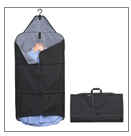 Executive Garment Sleeve
Executive Garment Sleeve
 RFID (skimmer) blocking Executive Organizer...protects your credit cards and passport
RFID (skimmer) blocking Executive Organizer...protects your credit cards and passport
 Venturesafe Camera Case
Venturesafe Camera Case
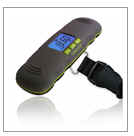 Mini Luggage Scale
Mini Luggage Scale
 Groovy ID and Document Organizer
Groovy ID and Document Organizer
 First Class Sleeper
First Class Sleeper
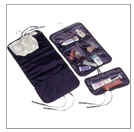 Hanging Cosmetic Bag
Hanging Cosmetic Bag
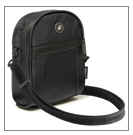 Slashproof Shoulder Bag
Slashproof Shoulder Bag
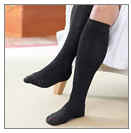 Avoid Deep Vein Thrombosis with Compression Socks
Avoid Deep Vein Thrombosis with Compression Socks
 French, Italian, German Phrase Book
French, Italian, German Phrase Book
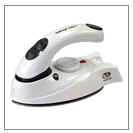 Dual Voltage Travel Iron
Dual Voltage Travel Iron
 Airborne Cold Remedy and Dietary Supplement
Airborne Cold Remedy and Dietary Supplement
 Groovy Flags Luggage Tag
Groovy Flags Luggage Tag
 Lonely Planet Fast Talk French
Lonely Planet Fast Talk French
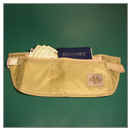 Passport and Money Belt
Passport and Money Belt
 Michelin Map of France
Michelin Map of France
 Airline Comfort Set
Airline Comfort Set
 Travelsickness Motion Bands
Travelsickness Motion Bands
 Eyeshade and Earplugs
Eyeshade and Earplugs
 Jet-lag Homeopathic Pills
Jet-lag Homeopathic Pills
Airplane Safety...
...products we like.






